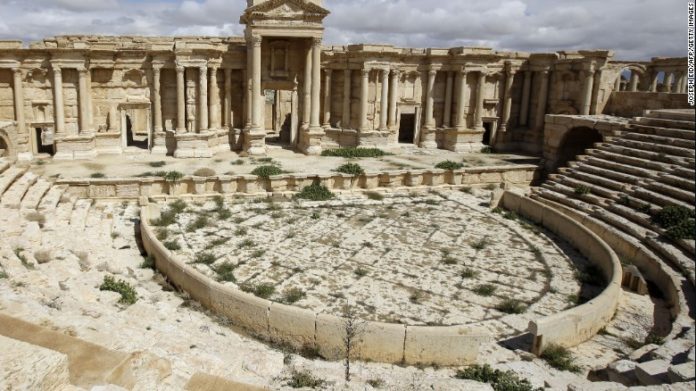
ISIS publicly has executed an antiquities expert in Palmyra, the Syrian city full of ancient monuments and temples, said Rami Abdulrahman of the Syrian Observatory for Human Rights.
Kalid alAsa’ad, a university professor and the former general manager for antiquities and museums in Palmyra, was beheaded on Tuesday in the city’s public square as militants watched, Abdulrahman said, citing alAsa’ad’s relatives in the city.
A police officer patrols the ancient ruins of Palmyra in the Syrian desert on March 14, 2014. The UNESCO World Heritage Site has stood since the second millennium B.C. and features some of the most advanced architecture of the period. It subsequently evolved through Greco-Roman and Persian periods, providing unique historic insight into those cultures.
Palmyra, northeast of Damascus, is known as the “bride of the desert” for its exquisite collection of ruins along a historical trade route that once linked Persia, India and China with the Roman Empire.
British historian and novelist Tom Holland described Palmyra as “an extraordinary fusion of classical and Iranian influences intermixed with various Arab influence as well.”
ISIS seized the city — a UNESCO World Heritage Site dating back in 2,000 years — in May. ISIS fighters destroyed two ancient Muslim shrines and posted photos of the destruction on Facebook, the Syrian government said.
One of the tombs destroyed is that of Mohammed bin Ali, a descendent of Ali bin Abi Taleb, the Prophet Mohammed’s cousin, according to the Directorate-General of Antiquities and Museums (DGAM) website. It’s in a hilly area 4 kilometers (2.5 miles) north of Palmyra.
“ISIS militants also blew up the shrine of Shagaf, known as Abu Behaeddine, a religious figure from Palmyra, dated to 500 years ago. The shrine is located in the oasis 500 meters away from the Ancient City’s Arch of Triumph,” read an emailed statement sent in June on behalf of Syria’s antiquities chief, Maamoun Abdulkarim.
Images posted on the DGAM website show dust and debris flying into the air as the shrines are destroyed.
Other monuments, temples and historic buildings have been mined, and a statue of a lion at the entrance to Palmyra’s museum has been destroyed.
As it has conquered territory, ISIS has destroyed archaeological sites, claiming that it considers religious shrines idolatrous.
Credit: CNN.com



